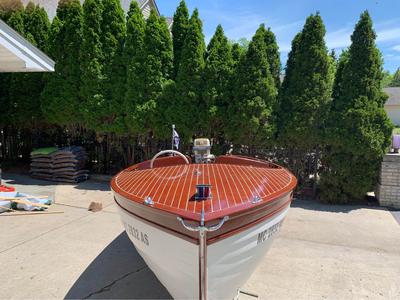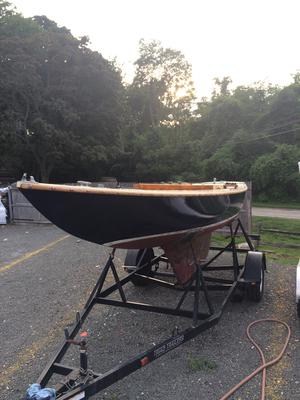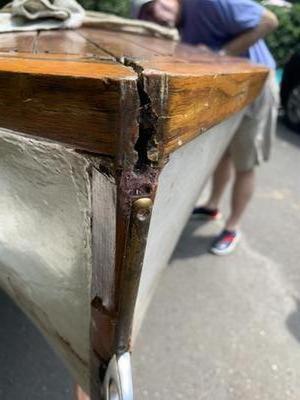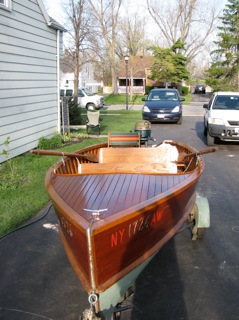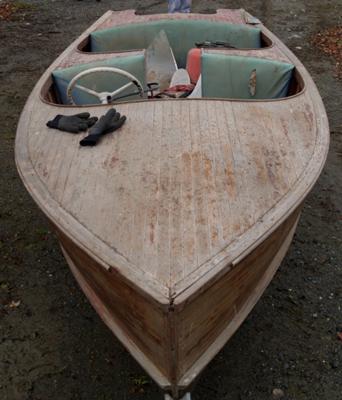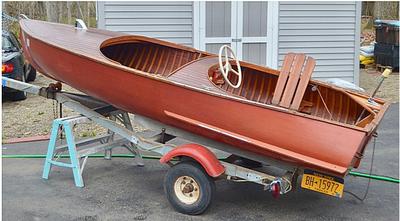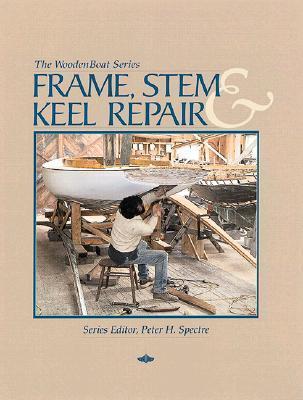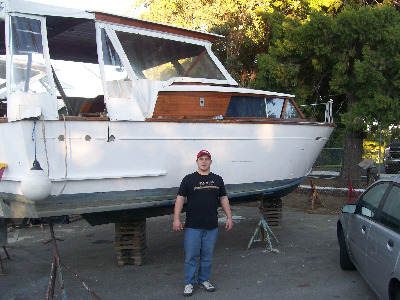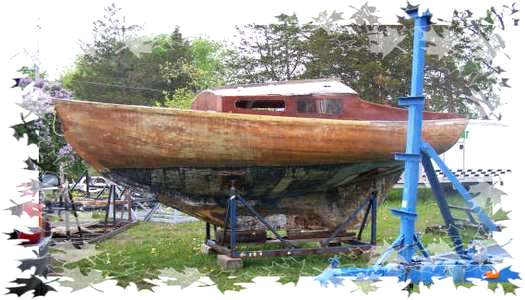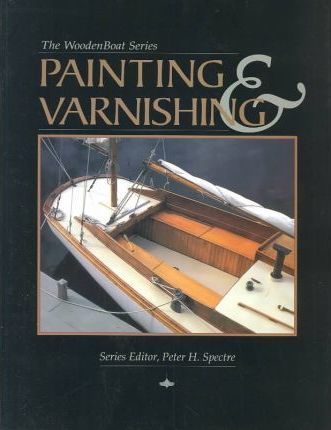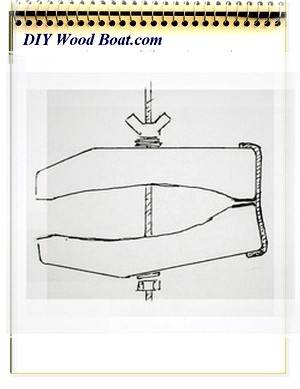- Home
- Your Boats
- Penn Yan Boats
Penn Yan Boats
Penn Yan boats originated in the small village of Penn Yan, New York, which lies at the northern tip of the east branch of Keuka Lake, one of the Finger Lakes.
The village’s unique name, “Penn Yan,” is a syllabic abbreviation of “Pennsylvania Yankee,” reflecting its founders' origins.
The Penn Yan Boat Company started creating these iconic wooden boats in 1921.
Penn Yan quickly became renowned for their durability and the distinctive, lightweight construction of their vessels, often making them the first choice for anglers and recreational boating enthusiasts.
One of the significant innovations introduced by the Penn Yan Boat Company was the use of "tunnel drive" on some models, which offered a shallow draft and added protection for the running gear.
This detail might be particularly interesting if you’re considering which model to restore.
Over the years, Penn Yan boats evolved in style and function, embracing outboard and later inboard motor configurations.
Each model was marked by meticulous craftsmanship that is still revered in the classic boat restoration communities today.
As we delve into the restoration of these timeless pieces, let’s start with understanding the uniqueness of each Penn Yan wooden boat.
Each vessel carries its history in its wood grains, and part of the joy of restoration is uncovering and preserving these stories.
When starting a restoration project, the first step is to assess your boat’s condition comprehensively.
Check for common issues like rot in the wooden hulls or issues in the original marine plywood that was often used by Penn Yan.
Gathering the right tools and materials is next.
Since many Penn Yan boats were constructed with specific types of wood like mahogany and oak, sourcing similar materials can enhance the authenticity and value of your restoration.
Documentation is key.
Try to obtain original manuals or blueprints.
The Penn Yan Historical Society and local libraries in that area might hold the archives you need to understand the formation and original specifications of your specific model.
Cherish the stripping process.
Removing old paint and varnish can be tedious but think of it as a treasure hunt.
Underneath those layers, you’re likely to discover the original wood surface, which holds much of the craft's character.
When it comes to repairs, focus on maintaining the integrity of the structure.
Use techniques like Dutchman repairs for patching holes or splits, which involve custom-shaped pieces of wood that are crafted to match the damaged areas seamlessly.
Selecting the right finish is crucial not just for aesthetics but also for protection.
Marine-grade varnish will ensure that your Penn Yan wooden boat not only looks splendid but is also shielded from the elements.
Remember, the goal of restoration is to honor the boat's original design and craftsmanship.
Penn Yan Swift
While modern adhesives and finishes can be used, try to mirror the methods and materials that were originally used as much as possible.
Moving to the interior, pay attention to the seats and floorboards.
These areas might require new stain or varnish to bring back their original lustre and protect them from wear and tear.
Electrical systems in older models, if present, should be carefully evaluated and updated to meet current safety standards.
Working with a professional electrician who understands marine systems can be a wise decision here.
Part of the joy in restoring a Penn Yan Wooden Boat is bringing back to life its engine, whether it's an original inboard or a classic outboard.
These engines are an integral part of the boat's history and functionality.
If the original engine is beyond repair, sourcing period-correct replacements might require some effort.
Enthusiast groups, auction sites, and specialty suppliers can be valuable resources for finding authentic parts.
Documentation of your restoration journey can be immensely helpful for future restorers, and also for your own records.
Take detailed notes and plenty of before, during, and after photos.
Once your Penn Yan is restored, maintenance is key to preserving its condition.
Regular cleaning, varnishing, and inspections will keep it functional and beautiful.
Joining a community, such as a classic boat club, can provide support and deepen your appreciation for your craft.
Events and gatherings are not only fun but are also great opportunities to learn from other enthusiasts.
Remember, each boat tells a story of both its creation and its adventures on the water.
Your work in restoration helps keep this superb craft alive and adds another chapter to its history.
For those just starting out with their first restoration, don’t be intimidated.
We were all once beginners, and the classic boat community is known for its willingness to help new members.
In conclusion, restoring a Penn Yan Wooden Boat is not just about the physical work involved.
It’s about preserving a piece of maritime history, learning old techniques, and keeping a tradition alive for future generations to admire and enjoy.
Your journey with a classic boat can be incredibly rewarding.
Not just for the tangible results, but for the connections you make and the skills you learn.
Every hour spent brings you closer to the day when you can sit back and watch your Penn Yan glide over the water.
If you ever feel overwhelmed, remember this: the restoration community is vast and filled with people who have probably faced similar challenges.
Reach out, share your progress, ask for advice, and stay engaged.
As you approach the end of your restoration project, consider planning a maiden voyage.
There’s nothing quite like the experience of testing the waters after your hard work restoring a beautiful Penn Yan Wooden Boat.
To those contemplating a Penn Yan restoration: it’s an endeavour that might test your patience and skills, but also immensely gratifying.
Imagine the pride upon completing a project that’s not only stunning but also steeped in history.
Financially, restoring a classic boat like a Penn Yan can be a wise investment.
These boats often appreciate in value, especially when restored sympathetically and with attention to original details.
Finally, always remember to respect the water where you sail.
Keeping safety gear updated and adhering to local boating regulations is not just smart—it's essential for ensuring that the joy of boating continues for you and others.
As we wrap up, I hope this guide has inspired you to either start or continue your journey in wooden boat restoration. There’s a lot to learn, but also so much to gain from bringing a piece of boating history back to life.
No matter where you are in your restoration journey—from curious onlooker to seasoned veteran—I’m cheering you on.
Each stroke of sandpaper, each coat of varnish, and every tuned engine brings these wonderful vessels one step closer to their former glory and prepares them for many more years of enjoyment.
Penn Yan wooden boats are a callback to a crafting tradition that embodies skill, dedication, and beauty.
I’m looking forward to hearing about your restoration adventures and seeing those beautiful classics make waves once again.
Keep sailing forward, and happy boating!
Please use the form below to share your story..
We all love to see what other Wooden Boat Builders and Restorers are up to.
